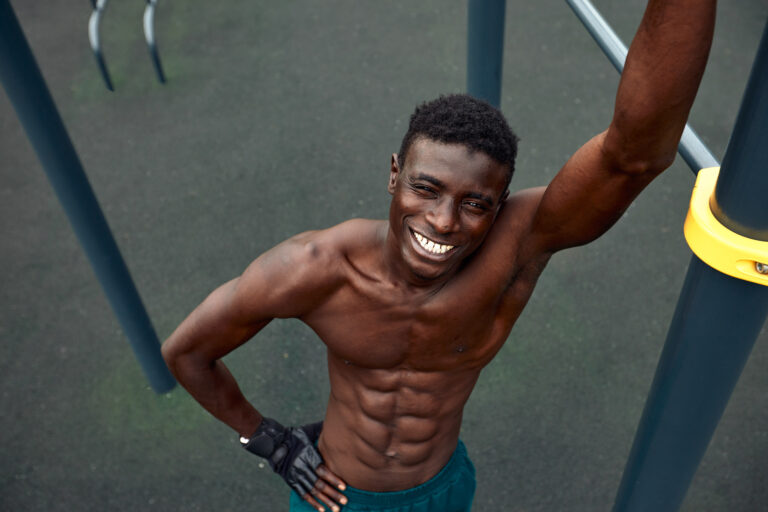What is the Frontalis?
The frontalis muscle, commonly known as the forehead muscle, plays a crucial role in our daily expressions and facial movements. Understanding its anatomy, function, and significance is essential not only for medical professionals but also for fitness enthusiasts and athletes. This article provides an in-depth look into the frontalis muscle, its development, clinical importance, and impact on fitness and aesthetics.
Anatomical Description
The frontalis muscle is situated on the forehead, spanning from the galea aponeurotica, a fibrous tissue on top of the skull, down to the skin above the eyebrows. This muscle is part of the larger occipitofrontalis muscle group, which includes the occipitalis muscle at the back of the head. The frontalis and occipitalis are connected via the galea aponeurotica, allowing coordinated movements across the scalp.
The frontalis muscle has a unique structure, characterized by its thin, broad, and flat shape. It originates from the galea aponeurotica and inserts into the skin and tissues of the eyebrows and forehead. This configuration enables the frontalis to perform its primary function: raising the eyebrows and wrinkling the forehead. These actions are essential for various facial expressions, such as surprise and curiosity.
The nerve supply to the frontalis muscle comes from the facial nerve (cranial nerve VII). Specifically, the temporal branch of the facial nerve innervates this muscle, ensuring precise control over its movements. The blood supply to the frontalis is provided by the supraorbital and supratrochlear arteries, branches of the ophthalmic artery. This rich vascular network ensures adequate oxygen and nutrient delivery to maintain muscle health and function.
Physiological Role
The primary function of the frontalis muscle is to elevate the eyebrows and create horizontal wrinkles on the forehead. These movements are integral to expressing a range of emotions, from surprise and curiosity to concern and skepticism. The frontalis muscle’s ability to move the eyebrows and forehead skin plays a vital role in non-verbal communication, allowing us to convey complex feelings and reactions without words.
The frontalis muscle does not work in isolation. It interacts with other facial muscles, such as the orbicularis oculi, which encircles the eyes, and the corrugator supercilii, located near the inner end of the eyebrow. Together, these muscles coordinate to produce nuanced facial expressions. For example, while the frontalis raises the eyebrows, the orbicularis oculi can simultaneously contract to squint the eyes, creating a look of confusion or deep thought.
In addition to its role in facial expressions, the frontalis muscle contributes to practical functions such as shielding the eyes from bright light. By raising the eyebrows, the frontalis helps to widen the field of vision, which can be particularly useful in certain physical activities and sports where quick visual assessment is crucial.
Development and Growth
The development of the frontalis muscle begins in the embryonic stage and continues through infancy and childhood. Like other skeletal muscles, the frontalis develops from mesodermal tissue, which differentiates into muscle fibers. By the time of birth, the basic structure of the frontalis is in place, although it will continue to grow and mature as the child develops.
Several factors influence the growth and health of the frontalis muscle, including genetics, nutrition, and overall health. Genetics play a significant role in determining muscle structure and function, including the potential for hypertrophy (muscle growth). Nutritional factors, such as adequate protein intake and essential nutrients, are crucial for muscle development and repair. A diet rich in vitamins and minerals supports optimal muscle function and resilience.
Environmental factors, such as physical activity and lifestyle choices, also impact the development and maintenance of the frontalis muscle. Regular facial movements and expressions help maintain muscle tone and flexibility. Conversely, prolonged periods of inactivity or lack of expression can lead to muscle atrophy, where the muscle fibers shrink and lose strength.
Clinical Significance
The frontalis muscle is associated with several clinical conditions and disorders. One common issue is tension headaches, often resulting from prolonged contraction of the frontalis and other facial muscles. These headaches can cause significant discomfort and impact daily activities. Diagnosis typically involves a physical examination and patient history, with treatment options including relaxation techniques, physical therapy, and medication.
Another condition affecting the frontalis muscle is Bell’s palsy, a form of facial paralysis resulting from dysfunction of the facial nerve. This condition can cause weakness or complete paralysis of the frontalis muscle, leading to a drooping eyebrow and difficulty with facial expressions. Treatment for Bell’s palsy may involve corticosteroids, physical therapy, and, in some cases, surgical intervention.
Trauma or injury to the forehead can also impact the frontalis muscle. Such injuries may result from accidents, sports activities, or surgical procedures. Depending on the severity, treatment may involve rest, physical therapy, or surgical repair to restore function and appearance.
Frontalis and Fitness
In the context of fitness, the frontalis muscle might not receive as much attention as larger muscle groups like the biceps or quadriceps. However, it plays a vital role in overall facial aesthetics and expression, which can be important for athletes and fitness enthusiasts alike. A toned and well-functioning frontalis muscle contributes to a youthful and vibrant appearance.
There are specific exercises designed to target the frontalis muscle, often referred to as facial exercises or “face yoga.” These exercises aim to strengthen and tone the frontalis by engaging it in repetitive movements. For example, repeatedly raising the eyebrows or making exaggerated surprised expressions can help maintain muscle tone. While some believe these exercises can reduce wrinkles and improve facial appearance, their effectiveness remains a topic of debate among experts.
Incorporating frontalis exercises into a fitness routine can complement overall facial muscle training. Just as athletes train different muscle groups to enhance performance and prevent injury, focusing on facial muscles can contribute to balanced muscle development and facial symmetry. This holistic approach to fitness recognizes the interconnectedness of all muscle groups, including those in the face.
Aging and the Frontalis
Aging affects all muscles in the body, including the frontalis. Over time, the frontalis muscle may lose some of its elasticity and tone, contributing to common signs of aging such as forehead wrinkles and drooping eyebrows. These changes can impact facial expressions and overall appearance, often prompting individuals to seek cosmetic interventions.
To maintain the health and appearance of the frontalis muscle as we age, it is essential to adopt preventive measures. Regular facial exercises can help maintain muscle tone and flexibility, potentially reducing the appearance of wrinkles. Additionally, a healthy lifestyle that includes a balanced diet, regular physical activity, and adequate hydration supports overall muscle health.
Cosmetic procedures such as Botox injections are commonly used to address signs of aging in the frontalis muscle. Botox works by temporarily paralyzing the muscle, reducing the appearance of wrinkles and fine lines. While effective, these treatments are not permanent and require ongoing maintenance to sustain results. It is important to weigh the benefits and risks of such interventions and consider natural methods for maintaining muscle health.
Cosmetic and Therapeutic Uses
Cosmetic enhancements involving the frontalis muscle have become increasingly popular. Botox injections are one of the most common procedures, aimed at reducing dynamic wrinkles caused by repetitive muscle movements. By temporarily paralyzing the frontalis muscle, Botox smooths out the forehead and minimizes the appearance of lines. These procedures are typically quick, with minimal downtime, making them attractive options for individuals seeking aesthetic improvements.
Therapeutic applications of interventions targeting the frontalis muscle extend beyond cosmetics. For individuals with medical conditions such as blepharospasm (involuntary eyelid twitching) or hemifacial spasm, Botox injections can provide relief by relaxing the overactive muscles. These treatments can significantly improve quality of life by reducing discomfort and social embarrassment associated with these conditions.
Physical therapy is another therapeutic approach that can benefit the frontalis muscle. For patients recovering from facial injuries or surgeries, targeted exercises and manual therapies can help restore muscle function and strength. Therapists may use techniques such as massage, stretching, and electrical stimulation to promote healing and improve muscle coordination.
Cultural and Psychological Impacts
The frontalis muscle holds cultural significance across different societies. Facial expressions, mediated by the frontalis and other muscles, play a critical role in non-verbal communication. In many cultures, the ability to convey emotions through facial expressions is highly valued and considered an essential aspect of social interaction. The frontalis muscle’s role in raising the eyebrows and creating expressions of surprise or concern is universally recognized and interpreted.
Psychologically, the frontalis muscle’s movements can influence how we perceive and interact with others. Studies have shown that facial expressions can impact our emotions and those of people around us. For instance, raising the eyebrows in response to a surprising event can enhance our emotional experience of that event. Similarly, seeing someone else raise their eyebrows can elicit empathetic responses and foster social bonds.
The frontalis muscle’s involvement in expressions of surprise, curiosity, and concern underscores its importance in interpersonal communication. These expressions can convey sincerity, interest, and empathy, facilitating meaningful interactions. Understanding the psychological impact of the frontalis muscle’s movements can enhance our awareness of non-verbal cues and improve our ability to connect with others.
Key Takeaways
The frontalis muscle, commonly known as the forehead muscle, is essential for facial expressions and non-verbal communication. It plays a significant role in raising the eyebrows and creating forehead wrinkles, contributing to expressions of surprise, curiosity, and concern. Understanding the anatomy, function, and clinical significance of the frontalis muscle is crucial for fitness enthusiasts, athletes, and medical professionals alike. Maintaining the health and function of the frontalis through regular exercise, a balanced diet, and preventive care can enhance overall facial aesthetics and improve quality of life.









